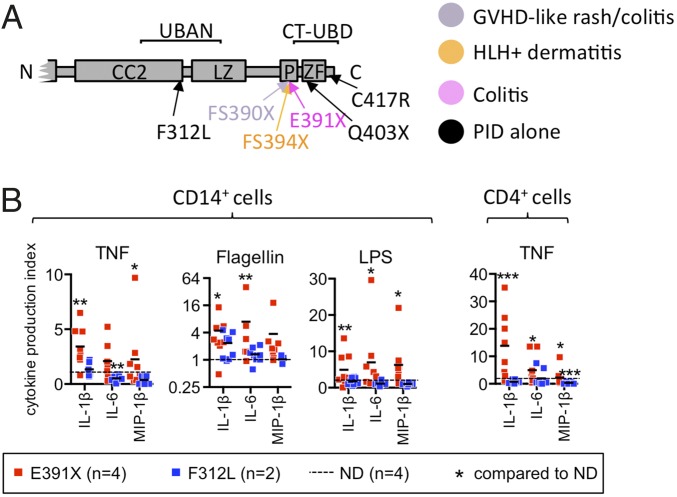Fig. 1.
NEMO C-terminal truncation is associated with inflammatory disease and results in enhanced stimulation-induced proinflammatory gene expression and cytokine production in patient monocytes and T cells. (A) NEMO syndrome inflammatory disease phenotypes affecting the C terminus. Color-coded protein mutations depict disease phenotypes. Mutations not associated with inflammatory disease but included in this study are shown in black. (B) Healthy control and patient-purified CD14+ and CD4+ cells were cultured in media alone or with TNF or TLR ligands for 24 h and secreted cytokines were measured by capture assay. Four individual patients with the NEMO-E391X mutation and two individual patients with the NEMO-F312L mutation were studied. The mean value of three independent experiments (E391X) or two experiments (F312L) is shown by the horizontal black bar. Statistical significance is determined in relation to normal donor. (See Dataset S1 for absolute cytokine production values from patient and healthy control CD14+ monocytes and CD4+ T-cell experiments.) GVHD, graft versus host disease; HLH, hemophagocytic lymphohistiocytosis; PID, primary immunodeficiency.

